caveman4.20
- 5,969
- 313
Cool big families are damn near extinct

Organic soil formulation is one of my favorite subjects.
I offer here a formulation and reasoning in the knowledge that you, my fellow thcfarmer, may benefit from a blend that has been serving me well for over two years, and some may care to offer comments on how I might tune this blend.
I grow four foot topped and pruned shrubs in three gallon pots and bags.
I water every four days with alfalfa tea made by a 24 hour bubble of alfalfa powder and kelp meal, with small additions of fish fertilizer and molasses and a final addition of worm water from my plastic stacking worm bin.
The Soil
6 cubic feet (45 gallons or ten buckets) of locally mined garden peat
3 cubic foot bag of “Down to Earth” compost
3 pound bag of bone meal
3 pound bag of blood meal
5 pound bag of high P bat guano
2 cubic foot perlite
1 cubic foot earth worm castings
My microbial environment is established by the combined ecology from native soils, compost, and EWC; which is then nourished by a microbe rich alfalfa tea.
Peat: If you don’t live near an Alaskan peat bog that will dump a load into the bed of your pickup, I suspect that any peat may do as well. They blend it with the local dirt, which is a wind blown glacial silt.
Compost: I like “Down to Earth” but home made or other manufacturers probably work just as well.
EWC: I have been making my own for the past year.
I start from cuttings which grow to flower fade with no deficiencies that I can see.
A careful reader might see that my quantities are predicted by the retail bag sizes offered.
I lay out a tarp and make a layer cake out of the components.
They are shoveled about until perlite looks evenly distributed.
I don’t know about this “letting it cook” concept.
The only cooking my soil does is incidental to my needs.
This is simply a compilation made from my readings here at the farm.
Letting the plants negotiate their nutrient uptake with the soil life is great if it works.
It works for me.
Give it a try.
Here's the after which was yesterday in pic.Cool big families are damn near extinct
View attachment 297466
That's a safe assumption rh is at twenty or so but I shut the closet and through a spritz once in morning once at night then wait a day or two mix and repeat ...So I assume you have this in a pretty high humidity location?Or at least 50, or greater?
OK SlapWould like to see some of your tea recipes Dunge.;) I always like trying new ones
Slap
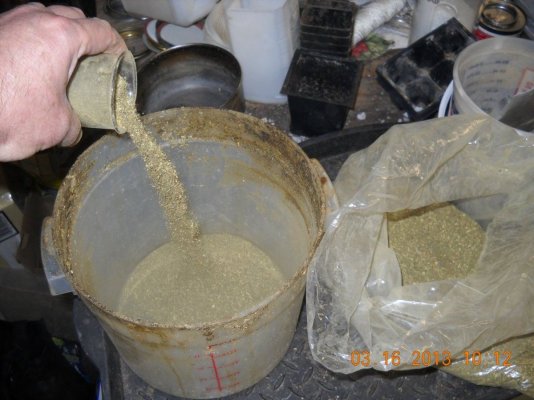
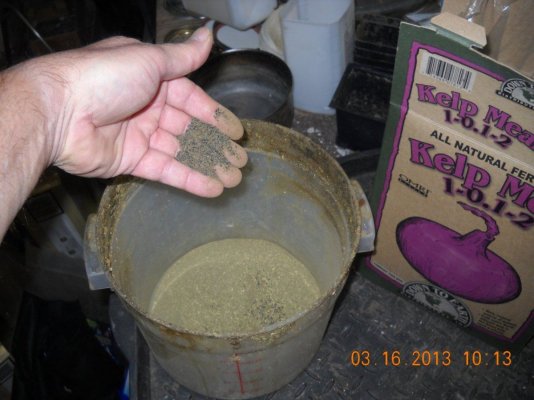
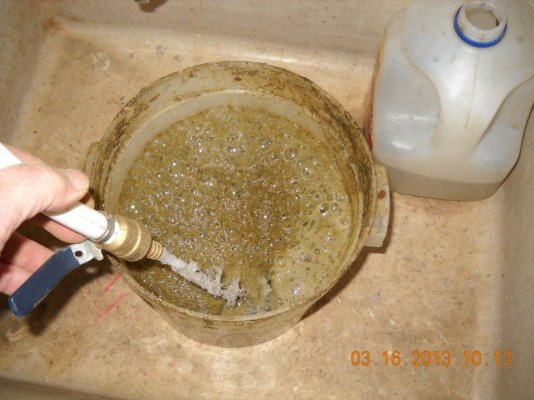
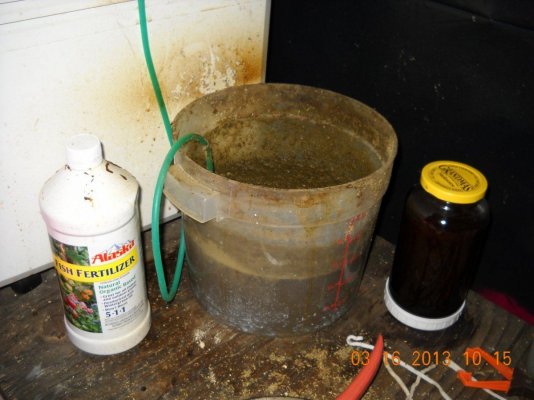
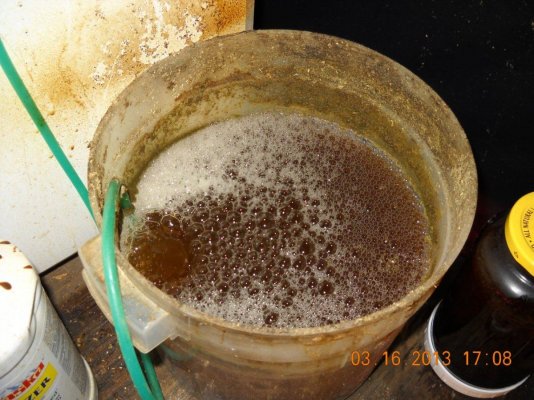
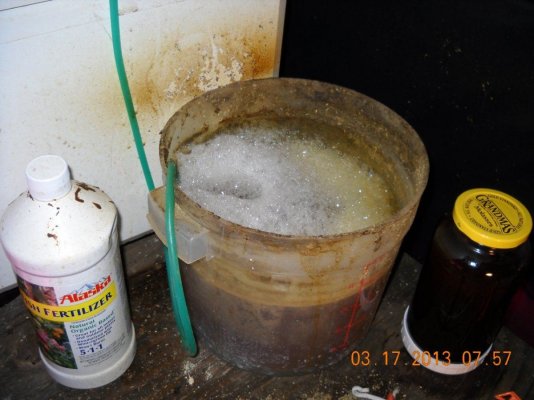
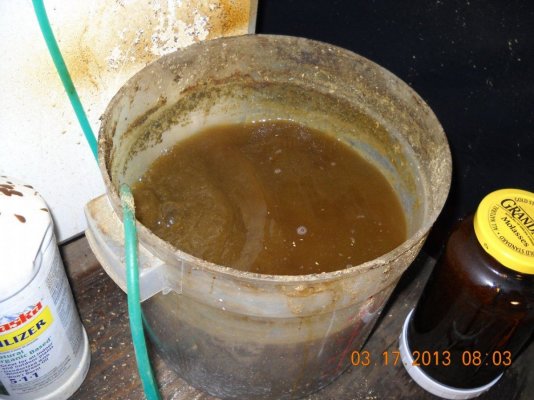
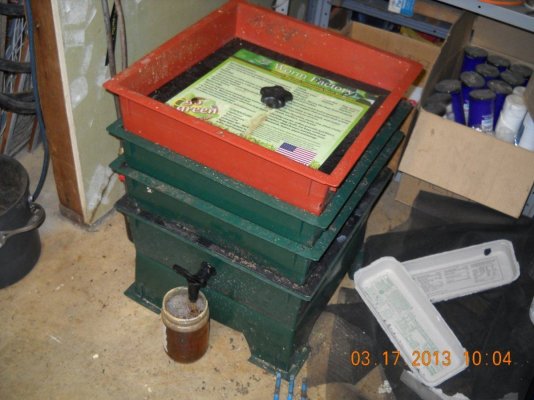
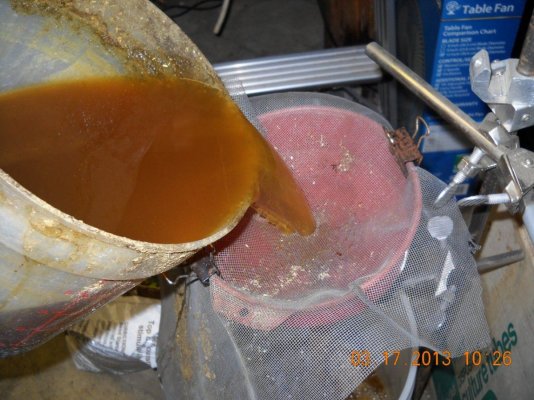
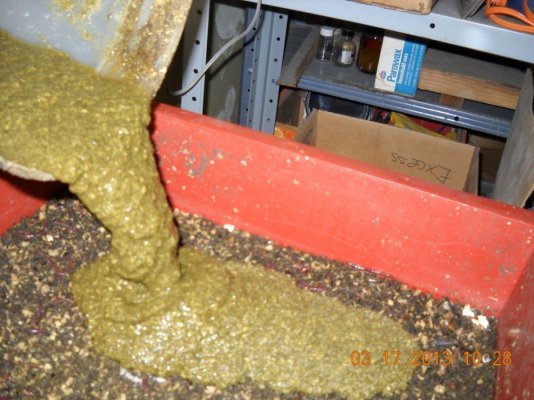
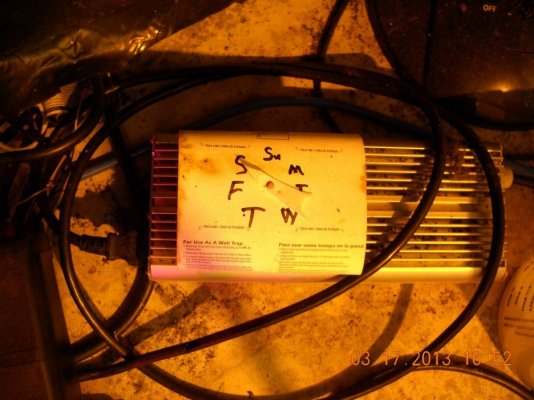
but there seems to be a strong enough resident population in the alfalfa to seed the microbial population, so I skip additions for now..
OK Slap
You asked for it.
Disclaimer: I have only been brewing teas for one year, so what I document here is only what is working for me at this watering.
As a reminder, I grow in super soil (three gallon) and do not add any additional feed other than what comes from the alfalfa tea.
If I wish to make any additions, they are made via the tea. Case in point is the addition of Gnatrol (Bti) just before watering for gnat fighting.
The plan: Day three since watering, start about a gallon of alfalfa tea to use in a four gallon watering tomorrow.
Add about two fist fulls, or two small beakers, of ground alfalfa to small bucket.
View attachment 298642
And a small grab of kelp.
View attachment 298643
Add water to about a gallon.
View attachment 298644
Bubble stone goes in.
View attachment 298645
After about seven hours.
View attachment 298646
How it looks in the morning. (about 22 hours)
Here is where I add a dribble of fish fertilizer to kill the foam. It just takes a bit and too much stinks of fish. I also add about a tablespoon, or one dollop, of molasses. Grandmas is great, but I am just using the bottle. My molasses is thick bear bait, purchased for cheep in a gallon jug. It is stabilized with propionic acid, which at these concentrations does not appear to harm the biota.
View attachment 298647
After additions and a good stir.
View attachment 298648
Collect run off from worms and add to tea.
View attachment 298649
Run tea through a screen so it doesn’t clog my watering wand.
View attachment 298650
Wet solids go to the worms.
View attachment 298653
After watering, don’t forget to reset the watering tell-tail.
View attachment 298655
Microbial populations were inspected at 200X.
Bacteria (small black dots) are abundant.
Some flagellated movement, but not predominate.
Abundant yeast. Too much sugar for too long will allow yeast to bloom and dominate the tea. Don’t know what to think of this, but I try to avoid yeast blooms.
The Worm run-off is high in bacteria and some very fast swimmers.
The finished tea smell is mild earthy with a hint of barn yard (in a good way).
None of this is set in stone. I have added too much fish fertilizer and had it stink of fish.
Have been through a number of inoculants including Capulator’s and Alaskan Humus etc., but there seems to be a strong enough resident population in the alfalfa to seed the microbial population, so I skip additions for now. (Other than that Bti)
For the most part this tea simply fits easily into my garden tasks, and I couldn’t be happier with the vitality of the garden (now that I have a gnat bloom under control).
So let me know how and why you think of tea differently than I, and we shall see what improvements might be made.
sqiuggly// you're "neat freak" is coming out. clean is in the eye of the beholder my friend. Bet you a dollar Dunge's plants are blowing the fuck up with his tea.It's more likely you're just growing whatever happens to fall out of the air into the bucket--or what is already sitting in the bucket before you add water (its not exactly clean now is it?).
